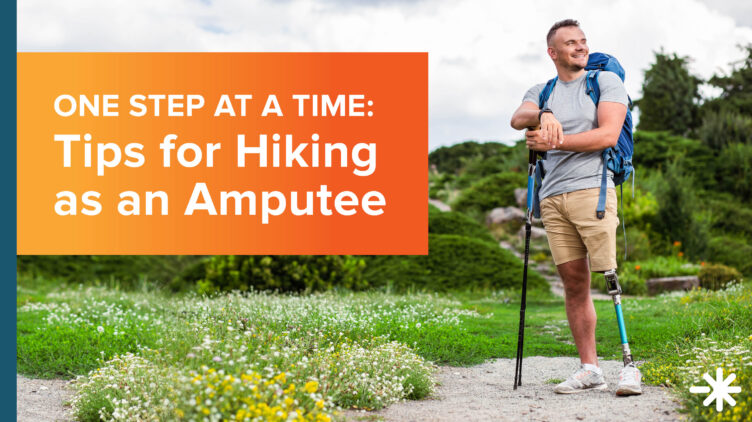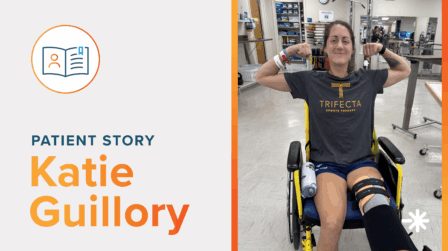One Step at a Time: Tips for Hiking as An Amputee

Hiking can be a great way for those with limb loss and limb difference to get active and see the world. Preparation is key for a successful hike. Here are some tips, from checking your prosthetic technology to having the right equipment and knowing your route.
Hiking is an excellent whole-body workout and confidence builder. Depending on the difficulty level of the hike and your ability, you may choose to hike with different equipment. Here are some tips for hiking as an amputee.
1. Work up to hiking by first walking
Walking is a great place to start. Walking is considered a journey along flat surfaces, often in urban environments. Hiking involves longer distances across uneven, sometimes hilly terrain in the great outdoors. The difference between hiking and walking primarily lies in the terrain type and equipment required. Practice walking first and work your way up to hiking.
2. Have someone with you
Having someone hike with you can help you stay safe and ensure someone can help you if there is an issue.
3. Consider crutches or hiking poles
These can help with balance, walking on wet, muddy, or snowy trails, walking uphill or downhill, and in case your prosthesis fails. When choosing poles, consider:
- Weight: Lightweight poles are best.
- Height: Adjustable height poles are important.
- Durability: Poles take a lot of pressure, so durability is important.
- Grip: Make sure the grip is approriate for you.
4. Choose the right gear
Wear moisture-wicking clothing appropriate for the time of year and weather conditions, and bring layers if needed. Consider the proper footwear, such as lightweight running shoes, trail shoes, or ankle-high lace-ups.
5. Pack essentials
Pack lightly to minimize extra weight, but plan to bring at least one extra set of clean prosthetic socks and your favorite skin care products to help prevent chafing. You might also want to bring a pair of crutches or a wheelchair in case your prosthesis fails.
Depending on your trail plan, in addition to food and water, you may want to consider other essentials such as navigation tools, a charged phone, headlamp, flashlight, first aid kit, fire starters, and multi-tool.
6. Plan your trip
Plan well in advance and start with day trips. When planning your trail, consider less advanced trails if you are new to hiking, and avoid crowded trails. You can also try “urban hikes” in your neighborhood.
7. Acknowledge when you need to turn around
It is better to acknowledge when you need to turn around rather than push yourself too hard. You can build up your hiking endurance over time.
Take it one step at a time and enjoy the journey at your own pace.
Request a Free Evaluation
If you or someone you love is looking for personalized prosthetic care, get in touch with a board-certified prosthetist at a Hanger Clinic near you.
Latest Updates
Subscribe to stay up-to-date on our latest posts.


